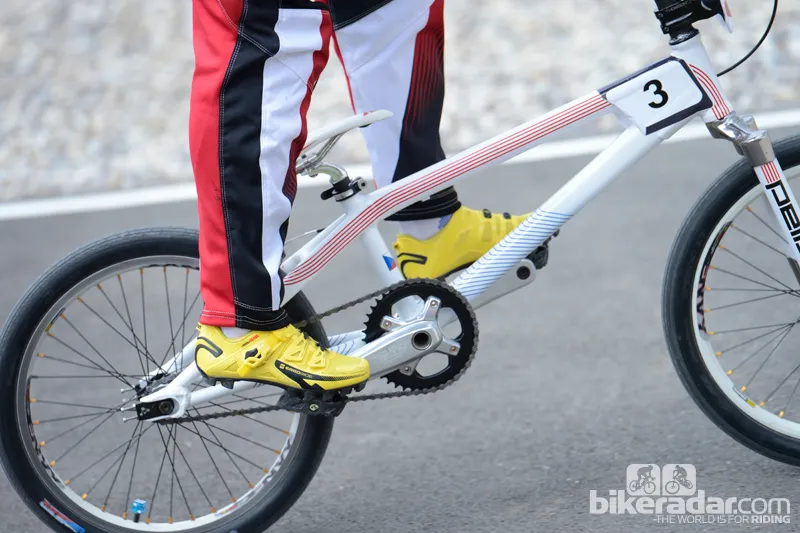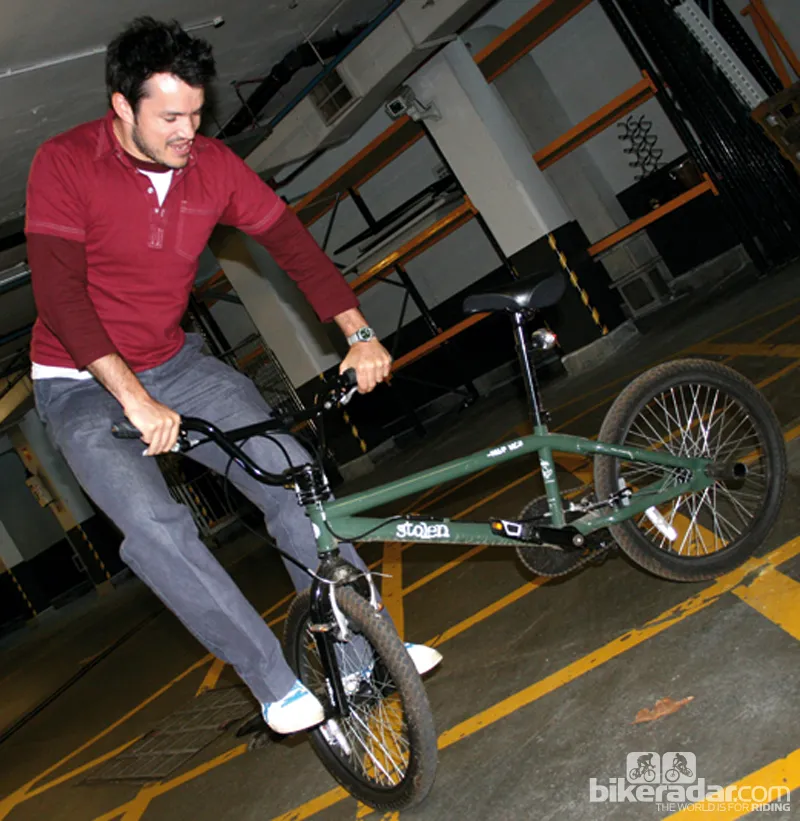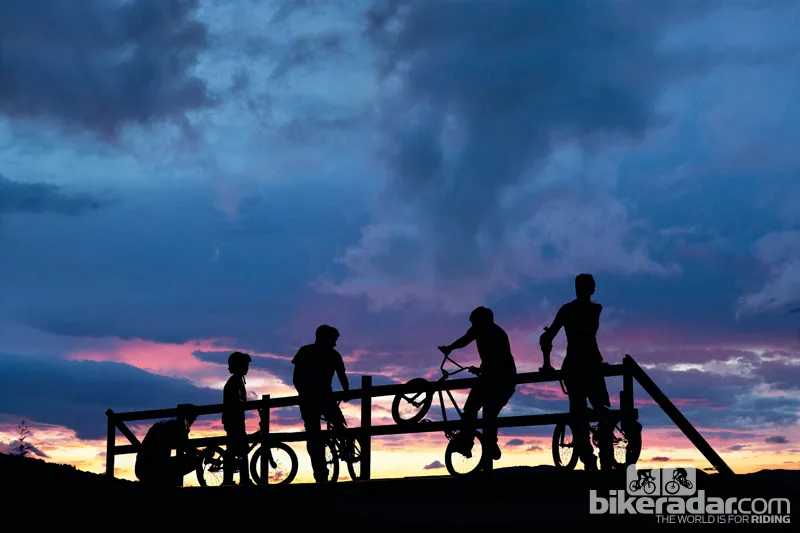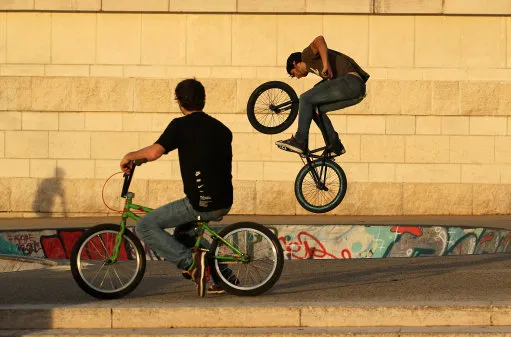The sport of bicycle motocross, or BMX as itʼs more widely known, originated in America in the early 1970s. It was designed as a stepping stone for kids to get into motocross, and quickly blew up into a sport in its own right.
It boomed in Britain in the early Eighties, as manufacturers got on board with producing complete bikes. BMX bikes still represent fantastic starter models for young riders, thanks to their compact size and relative simplicity.
What is a BMX?
BMX bikes are typically based around 20in wheels, although other wheel sizes can be found on race bikes. They feature a rigid frame and fork alongside high-rise handlebars and a single cassette gear. Their relatively basic construction makes them robust as well as easy to maintain and understand.
The sport has two distinct genres – racing and freestyle. Racing is where it all began as far as BMX is concerned, while freestyle evolved as a new breed of riders started specialising in tricks and bike handling as opposed to banging bars at the race track.
Although the two styles differ in style and, often, looks, theyʼre by no means juxtaposed and can both offer great all-round fun.
Frames
Racing BMX bikes tend to have aluminium frames, as the metalʼs lighter weight means manufacturers can use larger tube diameters and bigger weld surfaces. As a result, you get a stiffer feel thatʼs ideal for racing. The bikes also tend to offer a longer wheelbase and lengthier, low top tube that helps with stability at speed.
Freestyle BMX bikes have come a long way since the days of bodged race machines. The frames are typically made of steel. Heavier, cheaper, high tensile steel is typically used in entry-level models, while pricier numbers get 4130 chromoly tubing and some mid-range bikes offer a mix of the two. Chromoly is slightly lighter but, most importantly, stronger. The more you spend, the lighter the bike will be.
Both genres feature horizontal rear dropouts that are ideal for maintaining chain tension on a singlespeed bicycle. Other neat touches can include internal headsets, chain tensioners and seat clamps.

Low slung, singlespeed, horizontal dropouts – must be a BMX
Forks
Both styles of BMX feature rigid forks. High-end race bikes may use pricey carbon fibre forks but the vast majority opt for good old-fashioned steel. Again, 4130 chromoly is preferable for its superb strength-to-weight benefits, but high tensile material is more predominant lower down the price range.
Brakes
Although BMX bikes are sold (by law) with two brakes, racers usually remove the front one. Because a BMX race track is all about being as fast and smooth as possible, with no steep sections requiring speed to be scrubbed in a hurry, the front stopper is ditched to save weight. The rear brake tends to be a V-style number because theyʼre powerful and, again, light.
Freestyle BMX bikes will feature a front and rear brake and, on some models, a gyro. This is a combination of cups and bearings situated below the stem that allows the bars to be spun 360 degrees without tangling the brake cables.
Wheels and tyres
BMX wheels are some of the simplest youʼll find in the bike world. The vast majority feature a 36h alloy sealed bearing hub with a steel axle laced to a double wall rim. As a result, they offer superb strength.
Knobbly tyres are ubiquitous on race bikes as they offer good grip on loose surfaces. The front tyre is typically wider than the rear, to provide smoother handling, while the rear is thinner to allow a smaller contact point for snappier acceleration out of the gate.
Freestyle bikes tend to feature more Tarmac-orientated rubber for better grip on a mix of manmade surfaces.

Expect stunt pegs, a heavier frame and a gyro on a trick bike
Drivetrain
BMX bikes use three differing kinds of crank – one-, two- and three-piece. One-piece are the most basic and feature a single piece of metal to form both crankarms and the axle. Two-piece versions are similar to a lot of mountain bike cranks, with the axle bonded to the driveside crankarm.
Finally, three-piece cranks are considered the most desirable due to their increased strength. Bottom brackets can be the first thing to go on BMX bikes, due to the impact forces channelled through them. There are several styles available, depending on the style of crank, but theyʼre relatively inexpensive to replace.
Freestyle BMX bikes tend to feature ʻmicro driveʼ gearing (a relatively small front chainring and a correspondingly diminutive rear cassette). This is partly for aesthetic reasons but also allows for improved ground clearance during tricks.
Bars and stem
Two-piece steel bars are common in BMX. Again, higher-end bikes will feature chromoly steel while cheaper numbers get high tensile material. Bar heights tend to average out at about eight inches, and widths fall somewhere within the 27in ballpark. Stems are usually stout, 50mm, CNCʼd, front-loading, four-bolt alloy numbers.

Once youʼre confident on your bike, a BMX park can be a good place to practice
What to pay
Of course, local bike shops and online prices can vary. About £200 (US$350) will get you a decent entry-level BMX, while £400 (US$650) will see you entering mixed steel frame territory and £500 (US$800) or more will equate to a full chromoly machine.
Prices can continue up towards £800 (US$1,300) for a full pro-level bike. For younger riders, smaller-wheeled 16in and 18in bikes are available and well worth considering.

